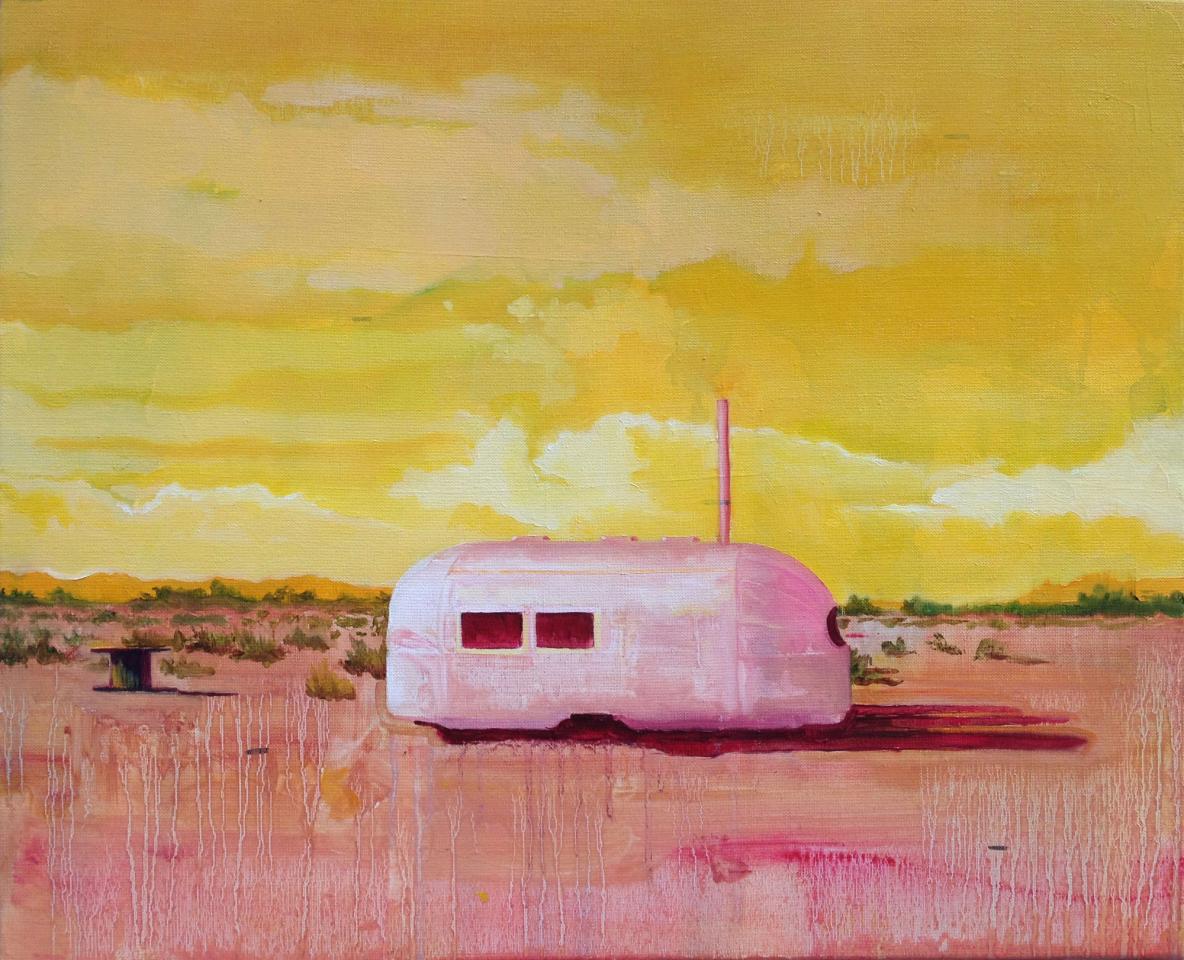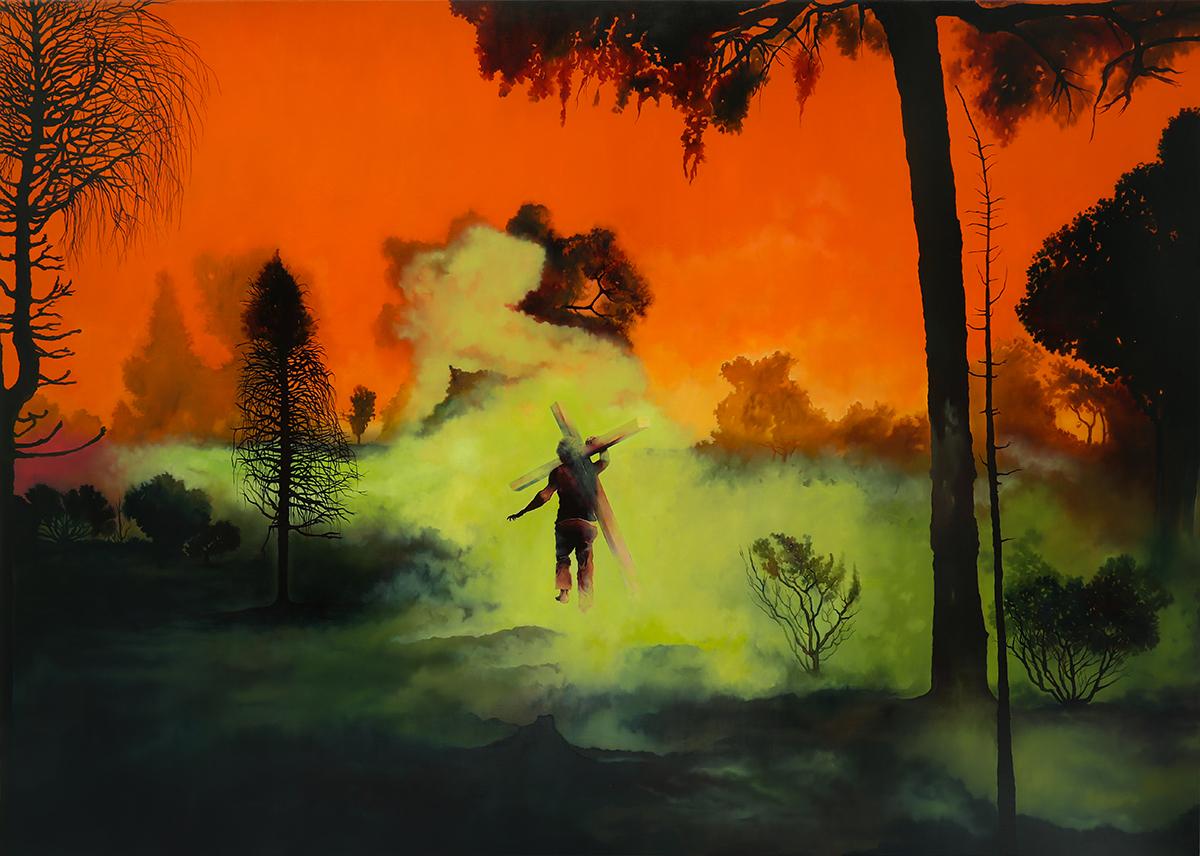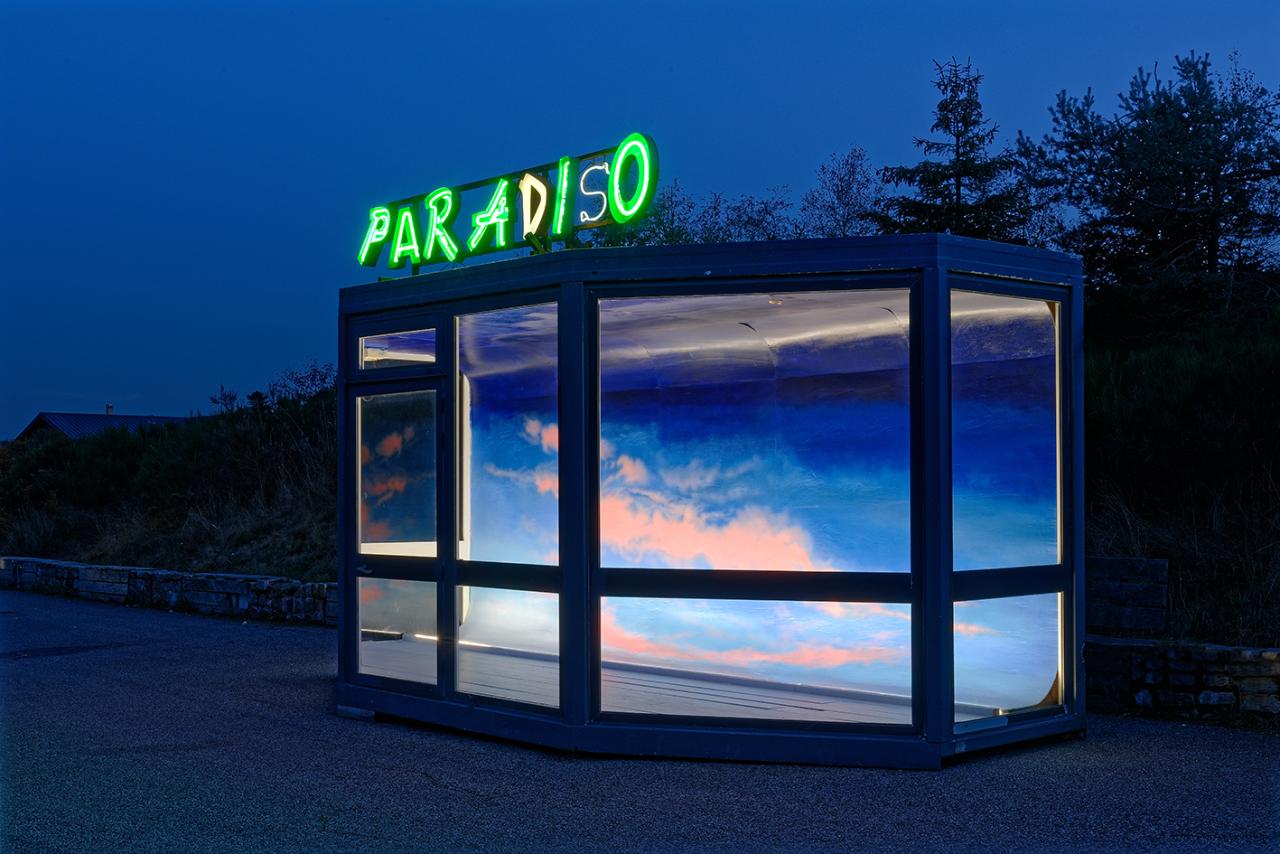Johann Rivat
Born in 1981
Lives and works in Saint-Etienne



“Johann Rivat’s painting is constructed around typical factors. Formats rarely smaller than 100 x 120 cm, and never larger than 230 x 340 cm. An absence of any frame around the canvas which leaves the edges of the stretcher apparent. An image which is made up of two more or less equal surfaces consisting of a lower part occupied by terrestrial space and an upper part revealing the sky. A central element, be it an architecture, an object, an animal and much more recently a man, creates the link between the two other parts. The treatment of the paint—alkyds, oils and coachwork paints—proceeds by way of a desire to play with an imperfect mastery and accept the fact that it acts in an autonomous way on the representation. The images chosen to compose the different scenes hail from diverse media, ranging from photographs gleaned on the Internet to personal snapshots, by way of scenes from films, songs, and literary descriptions. […] His representations are constructed through colour, using a technique which starts from darkness and heads towards light, in order to bring out the image. As he puts it: “Colour must create imagery”. […]
His relation to painting as matter has opened up doors for him towards a non-figurative approach. For some exhibitions he has projected paint directly on glass, but he has also retrieved the protective tarpaulins and rags which he used to stretch them over stretchers in order to re-appraise the aesthetic value of what were hitherto at best tools, and at worst waste. […]
If man has a central place in his oeuvre, he is nevertheless almost absent because he is very rarely represented. […] Recently, however, it would seem that the human figure and the context have regained a not inconsiderable importance and vitality through his series of drawings titled Uncivilized and paintings such as Echoing Through the Street and Survivalism. Seeing the different protest movements which the world is experiencing, and forms of demonstrations and confrontations which have found a new echo in the media, Johann Rivat has started to paint men and women finding themselves in the line of fire. […] From wide natural landscapes, we have come back into the street where something is in the process of being played out. Revolt is rumbling and it is obviously not insignificant that he is representing it. […] By refusing to precisely contextualize his scenes, the artist shows the universality of the event in order once again to leave himself room to develop a timeless pictorial research. […]
And if, through these latest canvases, Johann Rivat had in reality embarked on a gradual return to the cause of the absence of man in the previous ones. […] And if he focused on showing us the events preceding the disappearance of man from his post-apocalyptic world. And if his apocalypse were just a moment in which “the truth is revealed”. And if he had never really talked about our world but about a parallel world in which “the human being stands up not against the world or against nature, but against falsehood, against lies, and against an ever more unjust life together.” And if painting was henceforth resisting.”
Excerpt from Et si…, Anthony Lenoir, 2015
Translated by Simon Pleasance, 2015